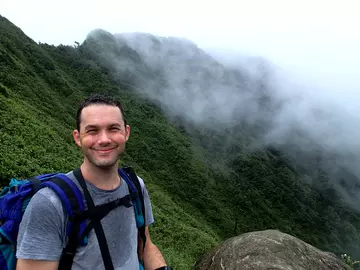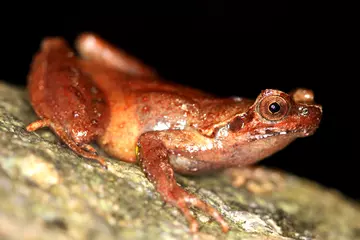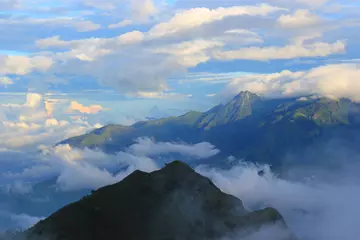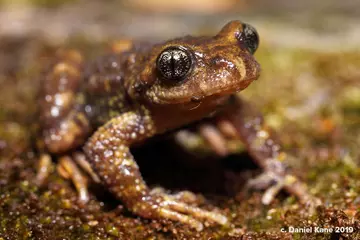
Well over 100 new species of amphibian have been discovered in the past 20 years. ZSL's Curator of Reptiles and Amphibians, Ben Tapley, explains what it's like to work in Vietnam's remote mountains of the north.

The day starts early, with a strong Vietnamese coffee and noodles, before getting ready to set out for our next field site. When we are in the mountains we either sleep under tarpaulins erected in the forest or in small camps used by tourists.
We’re always on the move and, once we arrive at the next camp, we have a quick lie down before heading out for a night of fieldwork.
I still get a rush of excitement heading out for an evening survey, you never know what you will encounter in the beam of your head torch. We are often out looking for frogs until well after midnight!
We concentrate our surveys on the area around Mount Fansipan, Vietnam’s tallest mountain.
It’s so remote and understudied that we’ve managed to find five species of frog that are new since 2017, including the Mount Fansipan horned frog (below), discovered by the team in 2018.

The weather is regularly punctuated by torrential rain, so hiking through the terrain with all of our equipment is brutal! Extremely steep, slippery slopes and sharp rocks – not to mention the occasional leech in unmentionable places.
I am not a fan of heights either, I prefer to look at mountains from the bottom, but it’s tough luck that the frogs we study always seem to live at the top.

The wildlife makes all the hardship worthwhile though. The mountains are home to species that are found nowhere else in the world – like the Sterling’s toothed toad, an Endangered species only discovered in 2013, with spindly legs, huge eyes and spiny patches on the males’ chests which help them grip onto slippery females during the breeding season.
The first time I saw one I was breathless from the high elevation and my teeth were chattering – I had just climbed up through a freezing waterfall – but the moment I saw two gorgeous eyes peeking out at me from a burrow on the bank of a stream I forgot how miserable the conditions were. I nearly fell back down the waterfall with excitement!

Finding frogs in Vietnam’s mountains takes patience, endurance and a little luck – but Ben and his team also have technology on their side. “One of the ways we can prove the existence of a new species is by recording their calls,” says Ben. “Unfortunately, frogs know that their calling makes them an easy target for predators and they will often stop calling if we get too close! Luckily, spending hours poised over waterfalls in the pitch black trying get a recording, or scrabbling through wet and spiky vegetation, always gives me quite a buzz.”
Vietnam’s forests are being lost at an astonishing rate, as people expand into new areas and the population grows. Fortunately, there is increasing awareness of environmental issues too.
One of the most heart-warming experiences I have had was meeting a porter during my first trip in 2015. He was really interested in what we were doing and joined us on one of our night surveys. We bumped into him by chance the following year and since we had last met he had diligently documented the presence of Sterling’s toothed toads at a new site higher up the mountain, and he even had the photo on his phone to prove it. It was moving to see not only the efforts he went to, but also the fact that he was able to contribute such valuable data.

As well as finding and documenting new species, I also help other conservationists from ZSL and partner organisations to protect the Vietnamese wildlife we know about, like the big-headed turtle.
They are so incredible and prehistoric looking, with whip-like tails and huge armoured head that make them one of the few turtles that can’t retract its head into its shell. Sadly, the big-headed turtle and many other freshwater species are hunted for their meat and the pet trade.
The number of turtles being illegally traded is staggering and the country is struggling to look after the number of turtles seized, but alongside the Asian Turtle Programme and Indo-Myanmar Conservation we’re working to improve rehabilitation centres.
Visiting field sites in places like Vietnam has been so important to my work at our two Zoos. It gives me and my team of zookeepers a chance to see the habitats of some of our zoo animals first hand, and improve our understanding of these incredible creatures’ behaviour.
Since beginning our work with the big-headed turtle, we were even able to rehome four turtles rescued from the illegal wildlife trade – smuggled in cereal boxes into Canada – and open a new exhibit to share their story with our visitors.
Watch our video to hear more about our work with big-headed turtles.
